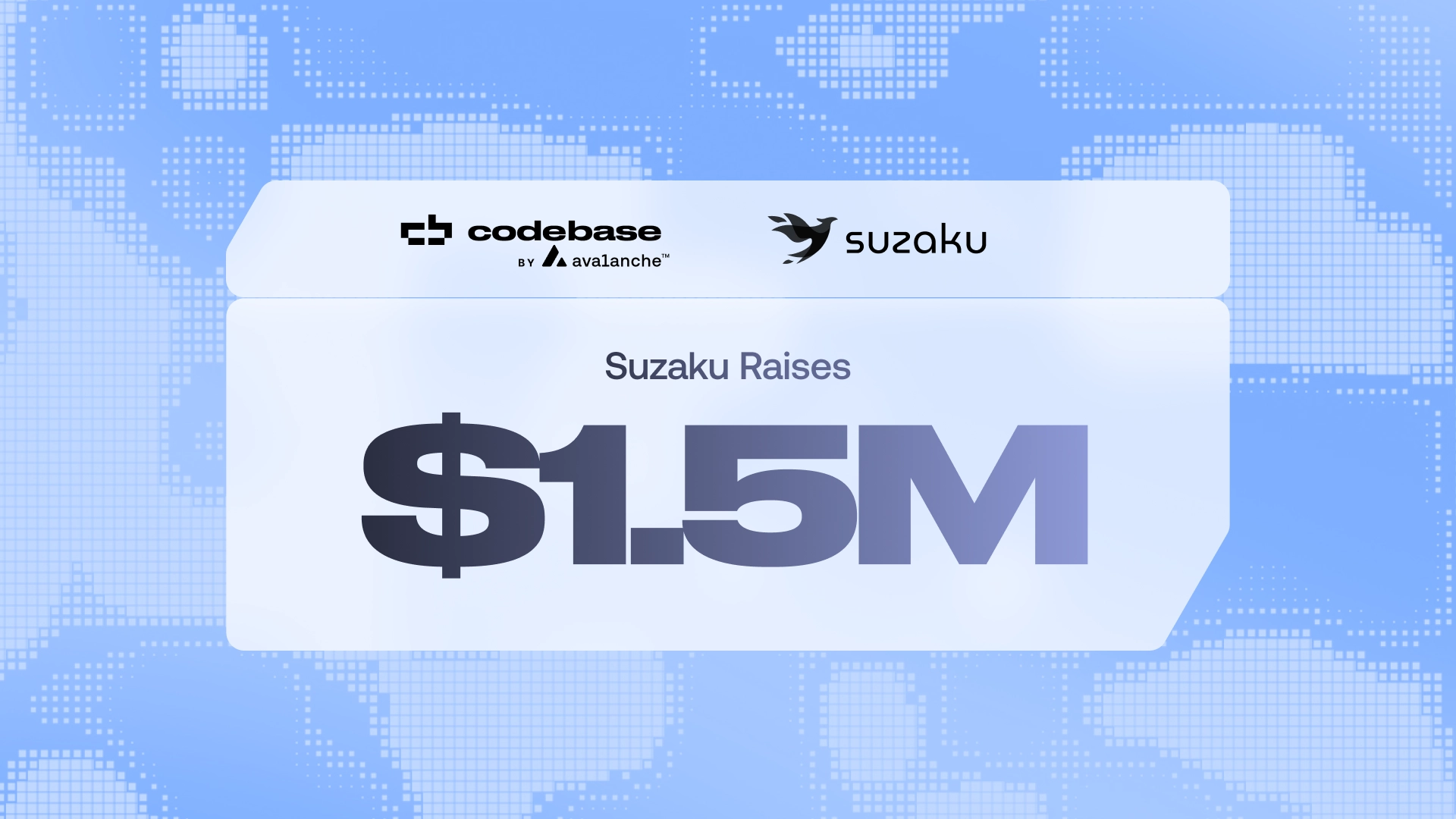How A Seasoned Investor Is Navigating Early Stage Web3 Opportunities in 2025
How A Seasoned Investor Is Navigating Early Stage Web3 Opportunities in 2025
Feb 19, 2025 / By Avalanche / 9 Minute Read

A conversation with Dragonfly’s Tom Schmidt on helping founders navigate the industry’s transition from fringe curiosity to institutional asset class.
Back in 2012, while his Stanford classmates were chasing Silicon Valley internships, Tom Schmidt was mining Dogecoin in his dorm room—mostly for fun and definitely not for profit. At the time, he says, everything in crypto felt like “play money.”
But a decade later, Schmidt—like the rest of the Web3 industry—isn’t playing anymore. Although Schmidt will always have a soft spot for the crypto “degens” that are keeping Web3 weird, as a general partner at Dragonfly he’s mostly focused on helping founders navigate the industry’s transition from fringe curiosity to institutional asset class.
Web3 Grows Up, A New Era for Crypto
One of the biggest changes Schmidt has noticed during his five years at Dragonfly is the influx of Web2 developers that are increasingly interested in building on-chain applications. This, he says, is one of the clearest signs of the industry’s maturity. For the first time, these engineers have both the right tooling and a sizable market to build the types of world-class applications that investors are looking for.
Schmidt’s excitement about the new breed of web3 developers makes sense. In many ways, it mirrors his own journey through the industry. After dabbling in Bitcoin and crypto mining while studying computer science at Stanford, Schmidt became a product manager at Facebook and Instagram where he was directly exposed to the power of marketplaces and their outsized role in shaping the trajectory of tech companies.
When the Ethereum ICO boom hit in 2017, Schmidt was primed to recognize the opportunity to build new types of marketplaces that were permissionless and censorship resistant. The ability to build applications on Ethereum represented a paradigm shift from Bitcoin's purely financial focus, opening up new possibilities for on-chain applications that reminded him of the early internet. “To me that was way cooler than Bitcoin because you could build things on top of Ethereum that people will actually use,” says Schmidt. "If you look at all the big Web2 companies, they're really marketplaces at the end of the day and it seemed like you could do that on-chain.”
This insight led Schmidt to join 0x, where he ran product for two years before signing on as a general partner at Dragonfly in 2019. He was attracted by the fund’s investment approach, which reflected the increasing sophistication and maturity of the Web3 ecosystem, and was familiar to Schmidt from his time working at big tech companies. The fund operates as a traditional venture firm with a long-term horizon, investing for both equity and tokens. Their methodology emphasizes thorough due diligence, which helped them avoid many of the infamous blowups from the 2021 bull market where 48-hour investment decision windows were the norm.
Schmidt, like so many investors in Web3, has plenty of battle scars from past bull runs. But these experiences have only served to help him separate the signal from the noise to get a better line of sight on what’s next for an industry in the throes of immense change.
A Strange Market: Less Hype, More Specialization
For Schmidt, the current Web3 market stands apart from previous crypto cycles in both structure and sophistication. Gone are the days of unified thematic waves—where all investors seemed to be rushing after ICOs, DeFi, or NFTs—that characterized past bull runs. Instead, the space has evolved into a nuanced ecosystem where different sectors experience their own micro-cycles of growth and innovation.
It's a very strange market," says Schmidt. "There are all these subsectors that are having their own moments and there are macro considerations, too. But it's not like everything in crypto is pertaining to this one particular thesis and there isn’t any sort of weird euphoria this time around.
This maturation has brought both institutional involvement and increased specialization, transforming how founders approach building and how investors evaluate market opportunities. What were once broad "crypto funds" have evolved into focused entities targeting specific niches like consumer applications, infrastructure, or particular blockchain ecosystems.
In Schmidt’s view, this fund specialization reflects the industry's maturation and the growing sophistication of both investors and founders. The trend has given rise to dedicated NFT funds, liquid crypto trading funds, and specialized yield-focused ventures, each bringing their own expertise to different corners of the ecosystem.
The investment landscape has also seen a shift in deal structures. Only a few years ago, founders had to have a token strategy if they had any hope of receiving an investment. While this created fast liquidity for investors, it also led to misaligned incentives between investors and the founders they were backing.
Since then, Schmidt says that investors have started structuring deals in ways that would be familiar to VCs outside of the Web3 ecosystem. "Right now, pretty much every deal we see is either doing a SAFE or equity raise plus a token warrant," Schmidt says.
This hybrid approach provides traditional investor protections while maintaining flexibility for teams to evolve their token strategies as their projects develop. This shift has also impacted the way that founders build Web3 startups and Schmidt says that many are re-evaluating whether a token release needs to be a part of their early roadmap and spending more time on building their product.
Back to the Fundamentals
One of the biggest impacts of an increasingly specialized Web3 investment landscape is that investors have started to prioritize practical go-to-market strategies over grandiose product visions. This is a standard lens to evaluate early stage investments outside of Web3, but this investment fundamental was lost during the mania of past bull runs.
When Schmidt evaluates investment opportunities at Dragonfly, he looks for founders that have a clear pathway to market. Too often, he says, founders will pitch a product that depends on their product being adopted by a major company. That’s a fine longterm vision, but it’s not a useful starting place. "Not enough founders are practical when it comes to how they'll get their first 100 users and customers," he says. "Those are going to be smaller customers and people who are closer to the metal. That's how you build that feedback loop."
The crypto industry is also old enough at this point that there is institutional memory. Unlike past cycles, many investors today have seen it before and have a better sense of the unique challenges that can befall a Web3 startup. For investors, the Web3 industry has historically been awash in unknown unknowns. Although they still lack a crystal ball, today those unknown unknowns have evolved into known unknowns, and investors increasingly expect founders to be savvy to this new reality.
For Schmidt, this means backing teams who embrace uncertainty while maintaining conviction. The ability to acknowledge unknowns and ask “dumb questions” often differentiates successful founders from those who falter. "You need a bit of arrogance to be successful as a founder," Schmidt says. "But as a VC, when I talk to someone, I recognize that we're all human and nothing is ever going to be 100% certain."
Founder Red Flags
If there’s one thing that all successful early stage investors have in common, it’s an uncanny knack for spotting red flags early on. This will differ depending on the product and industry a founder is building in, but after 5 years investing in early stage Web3 companies Schmidt has identified some common failure modes that founders need to be aware of.
The first is teams that are overly focused on token economics before they’ve built a viable product. "A lot of pre-seed and seed teams will already have this big complicated token plan mapped out when they’re pitching us,” says Schmidt. “They’re already too focused on launching a token rather than building a product." This approach often indicates misaligned priorities and can distract from the essential work of finding product-market fit.
Another common red flag is founders that are building products that don’t have a clear reason for being on-chain. For Schmidt, the future of Web3 won't simply mirror Web2's success stories with a blockchain twist. Instead, the winning applications will leverage the unique properties of decentralized systems – permissionless access, transparency, and censorship resistance–to create entirely new possibilities for their product. Schmidt draws parallels to what happened to traditional media with the rise of the internet. It’s fine to put the New York Times online, but the important insight was that the internet enabled anyone to write for a global audience and this enabled new forms of independent and social media that would previously have been impossible and ultimately ate the old guard’s lunch.
"People always pitch us on ideas that are things people are doing on Web2, but they're making it slightly more efficient or something,” says Schmidt. “I don't think those end up working most of the time. The Web3 apps that win rhyme with the things that were successful in web2, but they fundamentally unlock some new use cases that couldn’t have been done in Web2. That’s what gets me excited and is the spirit of the space, I think.”
What’s Next for Web3
Looking ahead, Schmidt sees particular promise in application-level projects that prioritize product development over token economics. "I think a lot of the application-level products are underrated today," he says. "Some of them are the most profitable companies in the space. They have insane retention and right now I think they're undervalued because there's no real path towards liquidity, but I think that will change over the next few years."
For founders building in Web3, Schmidt suggests focusing on fundamental value creation before considering tokenomics or the rapidly shifting regulatory landscape. While keeping abreast of regulatory changes is important, it shouldn't overshadow the core mission of building valuable products and services that solve real customer needs. This is particularly relevant as the industry sees an influx of Web2 founders entering the space, bringing their expertise in building world-class consumer products to the Web3 ecosystem.
As the industry continues to mature, founders who can balance innovation with practical execution while maintaining flexibility in their approach will be best positioned to succeed in this evolving landscape. The key lies not in simply transplanting Web2 business models onto blockchain technology, but in identifying and building the unique opportunities that only decentralized systems can enable.




